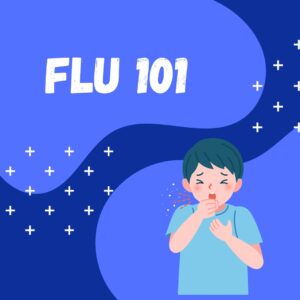All About Ticks
 We field calls about them year round but have been hearing a lot about them lately! Dr Lily Joseph is here to help with all your tick-related questions!
We field calls about them year round but have been hearing a lot about them lately! Dr Lily Joseph is here to help with all your tick-related questions!
While ticks are prevalent year-round in the Northeast and Mid-Atlantic, bites tend to be more common in the summer months when our families are spending more time outside. These pesky bugs love to live in brushy and wooded areas, but they may even be hiding in our backyards in the DMV.
Ticks carry a host of infections and the best way to prevent infection is to avoid tick bites. Clothes are our first layer of protection! Choose light, breathable clothes that cover the arms and legs fully. For hiking or playing in tall grasses, try dressing kids in long-pants tucked into closed-toed shoes. Pro tip: light colored clothes make it easier to spot ticks.
Insect repellants are also key! The American Academy of Pediatrics supports the use of DEET-containing products up to 30% strength in children over 2 months old. 10% DEET will offer protection up to 2 hours and 30% DEET protects for about 5 hours. Picaridin is another recommended option–5% Picaridin protects for 3 hours and 20% protects for up to 8-12 hours with similar efficacy to DEET. DEET or Picaridin repellants should be applied to areas of exposed skin and not to the skin that is covered by clothes. Other products containing citronella, catnip oil, and other essential plant oils are not recommended due to lack of data on safety and efficacy.
Treatment of clothing with Permethrin products is another great option, especially before kids go away for camp! Treat clothes with 0.5% Permethrin products using the product instructions. This will offer protection through multiple launderings. Never apply these directly onto the skin.
Despite our best efforts, tick bites still may happen! Most tick-borne infections require the tick to be attached to the body for more than 36 hours. I recommend incorporating tick checks into your family’s bedtime routine every night. Be sure to check in the armpits, between the legs, and even in the hair where bugs can hide.
If you find a tick on your child, don’t panic! Use clean tweezers to carefully remove the tick as soon as you notice it. Make sure you remove the whole thing, as sometimes they can break into pieces during the removal process. Clean the area well with soap and water and cover it with a bandaid and some topical antibiotic ointment like Polysporin. If the tick has been on the skin for an extended period, your child may need antibiotics to prevent Lyme disease! Call for an appointment or to speak to your child’s doctor to discuss the next steps.



 We are very excited to announce that Dr. Lily Joseph will be joining Spring Valley Pediatrics this summer.
We are very excited to announce that Dr. Lily Joseph will be joining Spring Valley Pediatrics this summer.
 Hey, everyone! Dr. Binns here, back with more info on these nasty winter bugs. Following up on last month’s
Hey, everyone! Dr. Binns here, back with more info on these nasty winter bugs. Following up on last month’s 